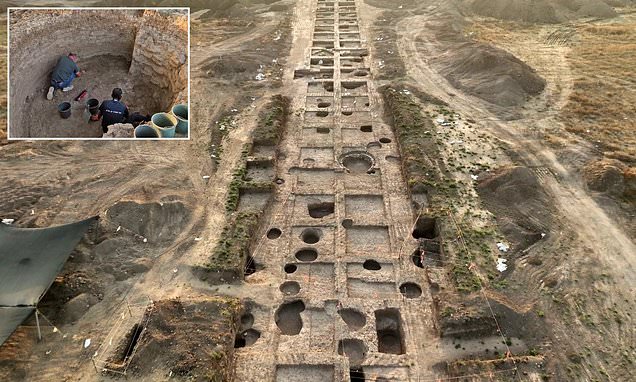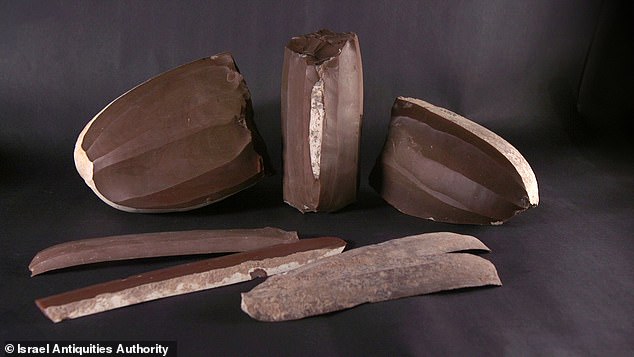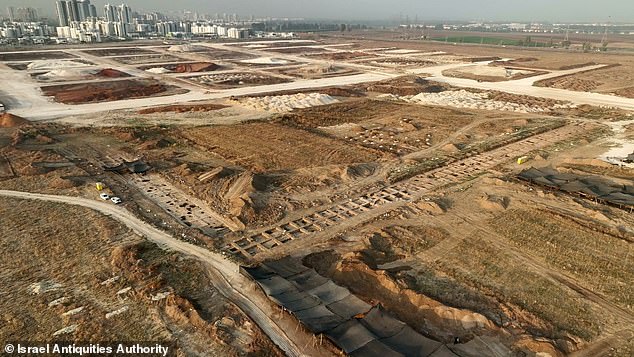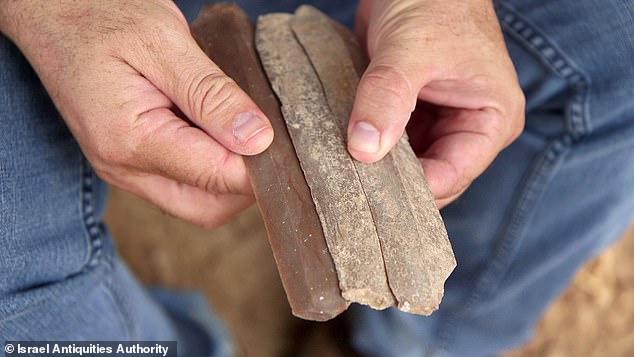Mysterious 5,500-Year-Old Blade Factory Discovered in Israel
Archaeologists in Israel have uncovered a find that could rewrite part of our understanding of early civilization in the biblical lands: a vast 5,500-year-old blade-making workshop, hidden for millennia beneath the soil of southern Israel. The site, discovered near the modern city of Kiryat Gat, is unlike anything ever seen before in the region—an industrial-scale production center for stone blades, dating back to the dawn of the Early Bronze Age.
The discovery is extraordinary not only for its sheer size but also for the questions it raises about the mysterious Canaanite people and their role in shaping early societies described in the Bible.

A Factory Frozen in Time
When archaeologists from the Israel Antiquities Authority began excavations at the site known as Nahal Qomem, they expected to find remnants of a small village or farming community. Instead, they unearthed something much larger: a full-fledged “factory” dedicated to flint blade production.
Beneath layers of earth lay vast underground pits, strewn with raw flint cores, broken fragments, and finished blades—evidence of an organized, large-scale industry. The blades themselves, some remarkably long and finely shaped, were not crude implements but precision-crafted tools, sharp enough to harvest crops, butcher animals, and possibly even serve ritual or ceremonial purposes.
“These were not simple tools,” said lead archaeologists Jacob Vardi and Dudu Biton. “They required expert knowledge, skill, and extraordinary craftsmanship. Only exceptional individuals could have produced them.”
The Mystery of the Canaanites
The discovery has sparked excitement because it connects directly to one of the most enigmatic peoples of the Bible—the Canaanites. Frequently mentioned in the Old Testament as the inhabitants of the Promised Land, the Canaanites have often been portrayed as rivals to the Israelites. Yet, archaeologically, they remain a puzzle.

This workshop pushes our understanding of their culture further back into time, showing that as early as 3500 BCE, the people of this region were not merely subsistence farmers but already masters of organized production and trade.
Could these very blades have been wielded by the ancestors of the Canaanites? Were they the tools that allowed early urban settlements to thrive, giving rise to the societies that biblical writers would one day record?
An Early Economy of Power
The significance of the discovery lies not just in the tools themselves, but in what they reveal about societal complexity. The factory represents evidence of:
-
Specialized labor – Only a handful of experts could make these blades, suggesting an economy built on professional skill.
-
Mass production – The sheer volume of waste material indicates this was not casual tool-making, but sustained, large-scale manufacturing.
-
Trade networks – Flint may have been exported across the region, traded like precious commodities.
For ancient peoples, flint was as vital as iron or steel would be centuries later. Whoever controlled its production could hold economic and political power over their neighbors. This workshop, therefore, may not have been just a local venture, but a cornerstone of an emerging regional economy.

The Spiritual and Ritual Connection
While many of the blades were clearly utilitarian—used for farming and butchery—some scholars wonder whether certain blades might have had ritual or symbolic uses. In many ancient cultures, sharp blades were associated with sacrifice, purification, or the sacred duty of providing food for the community.
If so, this factory may have been more than an industrial hub—it could have been a spiritual center, where craftsmanship and belief intertwined. The possibility that these blades were connected to early forms of worship or ceremonial practice adds another layer of mystery.
What Else Lies Beneath?
The Nahal Qomem site may be only the beginning. Archaeologists believe more remains of this ancient industry lie buried across southern Israel, waiting to be uncovered. The discovery opens the door to questions:
-
Were there other “factories” connected in a wider network of Canaanite production centers?
-
How far did these blades travel—were they traded across the Levant, Egypt, or Mesopotamia?
-
Did this industry help lay the foundations of the first cities and kingdoms in the region?
Each new excavation could shed light on a people whose history is still shrouded in mystery.

From Dig Site to Museum
The hundreds of blades, cores, and workshop remnants recovered from the site will be carefully preserved and displayed at the Jay and Jeanie Schottenstein National Campus for the Archaeology of Israel in Jerusalem. Visitors will have the rare chance to stand face to face with the very tools that once shaped life in the Bronze Age—objects that link us directly to the distant ancestors of the land.
A Glimpse Into the Distant Past
The discovery of the Canaanite blade factory is more than just an archaeological find—it’s a time capsule from the dawn of civilization. It tells us that, even before written history, people here were already organizing labor, mastering technology, and laying the foundations for the great cultures and conflicts that would echo through the Bible.
As archaeologists continue to sift through the soil of Israel, one thing is certain: the story of the Canaanites, and the blades they left behind, is far from fully told. Beneath the earth still lie secrets waiting to be unearthed—secrets that could change everything we thought we knew about the world of the Bible.
Source: Mail Online


